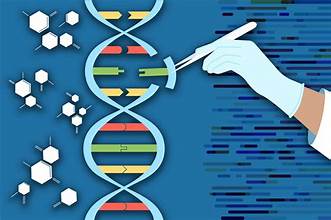
In recent years, genetic engineering has made tremendous strides, and at the forefront of this revolution is CRISPR technology. CRISPR, which stands for Clustered Regularly Interspaced Short Palindromic Repeats, is a groundbreaking tool that has transformed the fields of medicine and agriculture. Its precision, efficiency, and versatility are reshaping how we approach genetic modifications, offering promising solutions to some of the world’s most pressing challenges.
Understanding CRISPR Technology
CRISPR is a naturally occurring defense mechanism in bacteria, which they use to protect themselves from viral infections. Scientists have adapted this system for gene editing purposes. By using a guide RNA to direct the CRISPR-associated protein 9 (Cas9) enzyme to a specific location on the DNA strand, researchers can make precise cuts and introduce genetic changes. This method is simpler, faster, and more cost-effective compared to previous gene-editing techniques.
Impact on Medicine
1. Advancing Disease Treatment:
CRISPR has opened new avenues for treating genetic disorders. Conditions like cystic fibrosis, muscular dystrophy, and sickle cell anemia are being targeted through CRISPR-based therapies. By correcting faulty genes, scientists aim to address the root cause of these diseases rather than just alleviating symptoms. Clinical trials are underway, with promising results showing the potential for CRISPR to provide lasting solutions for previously untreatable conditions.
2. Personalized Medicine:
Another significant impact of CRISPR is its role in personalized medicine. By tailoring treatments to an individual’s genetic profile, CRISPR allows for more effective and targeted therapies. This personalized approach enhances treatment efficacy and minimizes side effects, marking a shift towards precision medicine.
3. Cancer Research:
CRISPR is also revolutionizing cancer research by enabling scientists to manipulate cancer cells and study their behavior more closely. This allows for the development of novel therapies and improved understanding of cancer’s genetic underpinnings. The goal is to create targeted treatments that can precisely attack cancer cells while sparing healthy tissue.
Transforming Agriculture
1. Crop Improvement:
In agriculture, CRISPR is being used to develop crops with enhanced traits such as increased yield, resistance to pests, and tolerance to environmental stressors. By making precise genetic modifications, researchers can create crops that thrive under challenging conditions, contributing to food security and sustainable farming practices.
2. Livestock Enhancement:
CRISPR is also making waves in animal agriculture. It is being used to improve livestock breeds by enhancing disease resistance, growth rates, and overall health. This technology holds the promise of more efficient and humane farming practices, with potential benefits for both animal welfare and agricultural productivity.
3. Environmental Impact:
Another exciting application of CRISPR in agriculture is its potential to reduce the environmental impact of farming. By developing genetically modified plants that require fewer resources, such as water and fertilizers, CRISPR can help minimize the ecological footprint of agriculture. This contributes to more sustainable farming practices and conservation of natural resources.
Ethical Considerations and Future Outlook
While the potential of CRISPR is immense, it also raises ethical and regulatory questions. Concerns about gene editing in humans, especially germline modifications, prompt debates about the long-term implications and the need for stringent regulations. Balancing innovation with ethical considerations will be crucial as CRISPR technology continues to advance.
Looking ahead, the future of genetic engineering with CRISPR is bright. As research progresses and new applications emerge, CRISPR is set to revolutionize not only medicine and agriculture but also other fields such as environmental science and biotechnology. Embracing this technology responsibly and ethically will ensure that its benefits are maximized while minimizing potential risks.
In conclusion, CRISPR technology represents a significant leap forward in genetic engineering, offering transformative possibilities for medicine and agriculture. By harnessing the power of CRISPR, we are on the cusp of a new era in scientific innovation, with the potential to address some of the most critical challenges facing humanity today.

